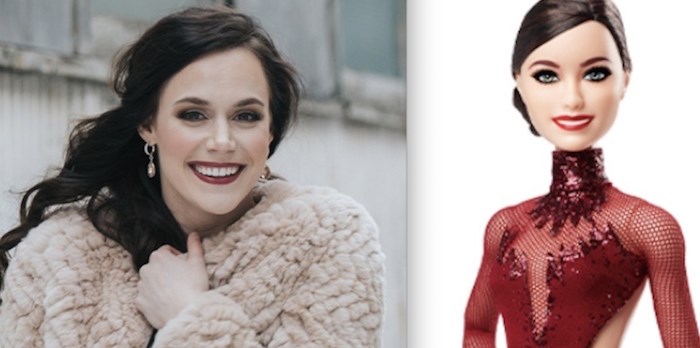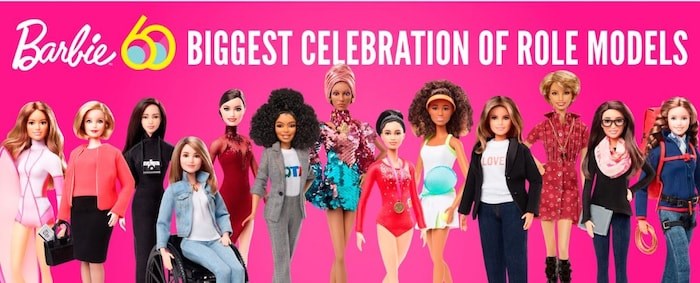For International Women’s Day, Olympic ice dancer Tessa Virtue wants young girls to understand they can accomplish anything they want.
 Olympic athlete Tessa Virtue poses next to her “shero” Barbie doll. Photo Barbie
Olympic athlete Tessa Virtue poses next to her “shero” Barbie doll. Photo Barbie
Virtue, who, along with skating partner Scott Moir, became the first ice dancers from North America to win a gold medal at the Olympics, says encouraging girls to follow their dreams is one of the reasons she agreed to become the Canadian ambassador for the Barbie Dream Gap line of dolls. The new Barbie collection includes 20 role models from 18 countries from across the globe. Some of the other women included in the line are Naomi Osaka, a tennis player from Japan, Adwoa Aboah an activist and supermodel from Britain, Kristina Vogel a cycling and wheelchair athlete from Russia, and Melodie Robinson, a sports journalist and presenter from New Zealand.
“I’m so honoured to be the Canadian representative for these role models and to be able to use this platform to share my story as part of Barbie’s commitment to close the dream gap,” Virtue told the Courier during a phone interview from Toronto Friday morning. “I was privileged and fortunate to grow up with a sense of limitlessness and I truly felt I could do anything. I want to help other young girls feel the same way.”
The “dream gap” is a term used to describe how much easier it is for boys to visualize and pursue their goals than girls. Research shows that starting as young as age five, many girls begin to develop limiting self-belief perpetuated by cultural stereotypes, gender biases and representation in the media that promote the idea that being gifted is an inherent male quality.
When girls are impacted by these limiting factors and begin to view themselves differently, that’s called the dream gap. In celebration of Barbie’s 60th anniversary, the company decided to create the “shero” dolls as a way to show young girls the sky’s the limit when it comes to career and life choices. Virtue adds research shows boys don’t suffer from the same self-doubt girls do.
“What’s not okay is when a young girl’s self-belief hinders her sense of self in response to cultural norms and gender divides,” said Virtue. “Whether they’re interested in science or athletics or music or art.”
Virtue said when she was young she used her Barbies — and her imagination — to act out roles, such as a teacher, coach, athlete or lawyer.
“Girls have to feel like they can freely pursue those careers fearlessly,” said Virtue.
As for how Virtue Barbie doll was created, she says the maroon skating costume her Barbie is dressed in is based on her and Moir’s "Moulin Rouge" performance at the 2018 PyeongChang Olympic Games where the pair took home two more gold medals, making them the most decorated figure skaters in the history of the sport. The doll’s creators then worked with Virtue to recreate her likeness, hair, and makeup.
 Barbie is celebrating its 60th anniversary with a line of role model dolls, including Olympic champion Tessa Virtue (fifth from the left). Photo Barbie
Barbie is celebrating its 60th anniversary with a line of role model dolls, including Olympic champion Tessa Virtue (fifth from the left). Photo Barbie
And as for the possibility of her Barbie doll teaming up with the Ken doll, Virtue says that’s not going to happen.
“When girls have female role models they know they can take on the world — without any men,” said Virtue.
To continue the brand’s ongoing global initiative to close the dream gap, Barbie will donate $1 from every doll sold in the United States to the Barbie Dream Gap Project Fund, dedicated to supporting like-minded organizations levelling the playing field for girls, while raising awareness of limiting factors that prevent them from reaching their full potential.



